Vermes
Advanced Member level 4
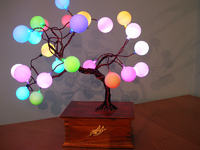
Construction
Base is a pine casket painted with varnish. A properly adjusted brooch in front serves as a touch switch.
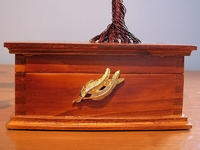
Holes are drilled on the top. Further beams of copper wires enter through those holes. An IR receiver was hidden in the trunk, so that the tree can be controlled by remote control.
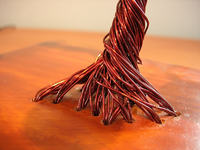
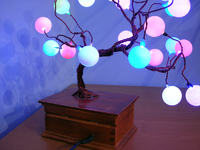
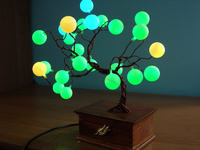
A transformer and electronics is located inside the casket. Links to the next wires are from the top. It may not look aesthetically pleasing, but it does the job, because it maintains a stable tree. Transformer do not heat at all.
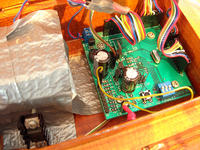
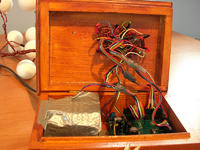
The tree consists of laced together, enamelled copper wires with a thickness of 0,7mm. 4 beams (anode + 3x cathode) reach every diode. This gives a total of 96 separate wires, because the tree has 24 'leaves'. Each diode is connected to the wire via tin and is insulated with colorless shrink tubing. Balls from deodorants with drilled holes are put on the diodes.
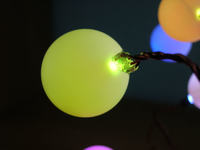
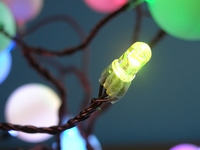
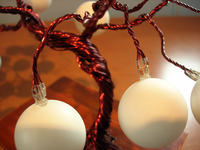
Electronics
The plate was self designed and it was done by a professional firm, it is two-sided, lacquered, with screen printing, what is shown in the pictures.
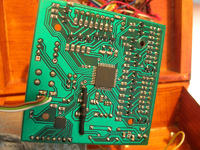
The power supply was taken from an old unitry radio. Voltage is rectified using a diode bridge, filtered through an electrolytic capacitor and passed through a stabilizer LM7805. The LEDs are arranged in groups of eight. All three colors of 8 LEDs can be actuated at any time. The plate is designed to be able to handle 5 channels (40 LEDs), but in this project only 3 of them are used. The colors are controlled with PNP transistors and the channels support NPN transistors, because diodes with common anode are used. Control is sequential and using software PWM. Additionally, the plate contains a touch buttons driver system (connected to the front 'leaf') and the connection to the infra-red receiver. There is also space for a microSD card, so that the results could be stored in it in the future. Atmega32 controls the whole.
Software
Written in C. Diodes control is done using PWM software, combined with sequential switching the channels. Each part of the sequence is triggered by a timer interrupt. Refresh is set to a 80Hz. Main loop generates the effects, which are normal functions synchronized with a second timer. Currently there are 8 different effects that occur randomly, of course few of the effects has a part of randomness (actually pseudo-randomness). Interrupts generated by IR receiver and touch button are supported as side modules.
Summary
The tree is made aesthetically, it looks nice, not only when lit. Soldering the LEDs and activities associated with the formation of the tree are quite time consuming. Pay attention when connecting it to the plate, because it is easy to make mistakes then.
The video below shows the work. The total length of all sequences is about 8 minutes, so the video was shortened a little.
Link to original thread (attachment) – Drzewko RGB z kulek od dezodorantów